First impressions: Case IH’s new single-rotor AF10 combine
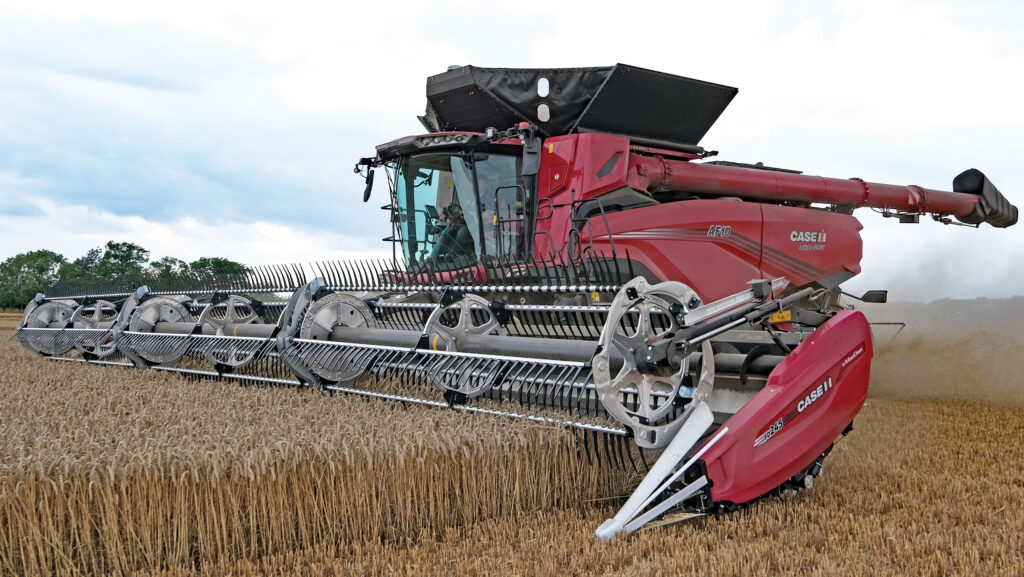 © James Andrews
© James Andrews While rival brands offer an assortment of separation systems, Case IH only has eyes for socking great single rotors – which is exactly what can be found running the length of its new flagship AF10 and AF9 combines.
But these machines are no minor rehash of the maker’s existing Axial Flow range.
See also: Video: Kent Grower trials Case IH’s new AF10 combine
Fewer than 500 parts are shared with the current 260 series, the rotor is 40% longer and there’s a capacious two-part cleaning shoe for efficiently sorting grain from chaff.
This offers a far larger surface area than the old setup and has the added party trick of being able to jiggle itself sideways to keep the sieves evenly loaded on sloping ground.
Engine mounting has been reworked too, so that the block sits at the same angle as the rotor. And there’s a swish straw chopper and chaff spreader that uses radar to ensure even distribution of crop residue.
Same as a New Holland?
If any of this sounds familiar, it’s because much of this technology is shared with New Holland’s latest high-capacity combines – the CR10 and CR11.
Of late, the harvester divisions of both brands have been pooling resources and the result is that their top-spec models have plenty in common.
But there’s one big difference – while Case’s AF10 and AF9 have just one rotor running front to rear, New Holland machines have two.
The only exception to this rule is the AF11 – essentially a New Holland CR11 painted red – which won’t be sold in this country.
So, for UK buyers, the normal order prevails and Axial Flow combines remain single rotor only.
As for where they’re built – New Holland assembles its harvesters in Zedelgem, Belgium, while the Case models are bolted together in Grand Island, Nebraska, US.
How much output?
In line with most makers’ flagship combines, spot work rates are around the 100t/hour mark and there have been reports of the AF10 achieving this at UK demos.
One of the factors contributing to this is the re-engineered threshing and separation system.
The first notable change is that the transverse beater charged with feeding material into the rotor is synchronised so that the two spin at the same speed.
This helps smooth the flow of crop into the machine and keeps the mat of material more consistent as it travels through the internals, avoiding lumps that can reduce the efficiency of the process.
Rotor diameter is the same as the 260 series, but lengthening it by 1m has created far more separation space.
In theory, this means the straw doesn’t have to be squeezed as hard to extract grain, giving it a little less grief in the process.
In easy-to-thresh crops, operators can initiate peak kindness by slackening the angle of rotor vanes to let the crop pass through more quickly.
In their most relaxed position, straw will perform three-and-a-half wraps of the rotor, with the sharpest angle holding it in there for nine-and-a-half revolutions.
Like their predecessors, the rotor is driven by a CVT transmission, but the new version has a nifty automated process for clearing any blockages.
Before, operators would have to manually rock rotor shift buttons to loosen material.
Now, they simply press a button, after which the combine embarks on a choreographed sequence that frees the rotor and spits the offending lump of crop out via the header.
More efficiency gains have been introduced by mounting the engine and transmission longitudinally at the same pitch as the rotor, avoiding any unpleasant angles that sap power and require more components to maintain.
Plus, almost all functions are shaft driven, with no chains to adjust and oil, and just a handful of belts.
What’s changed in the cleaning shoe?
Rather than just increase the size of its existing cleaning shoe, Case has fitted the AF combines with two separate units, one in front of the other.
This means there are four sieves in total – two at the top and two at the bottom – which increase the overall cleaning area by 50%.
In addition, the built-in shaking function levels out grain and chaff to make efficient use of the entire sieve area.
This is controlled by air pressure sensors that detect an unevenly loaded cleaning shoe before signalling an electric actuator to change its oscillation.
From here, clean grain is ferried by elevator into the tank, which has a 20,000-litre capacity on the AF10 and 16,000 litres on the AF9.
Thanks to two cross-augers, the larger combine can discharge the contents at a rate of 210 litres/sec, with the option of dropping to a slower speed of 159 litres/sec for topping off trailers.
The AF9 comes as standard with the slower unloading speed and both have a hydraulically adjustable spout to help accurately direct the flow of grain.
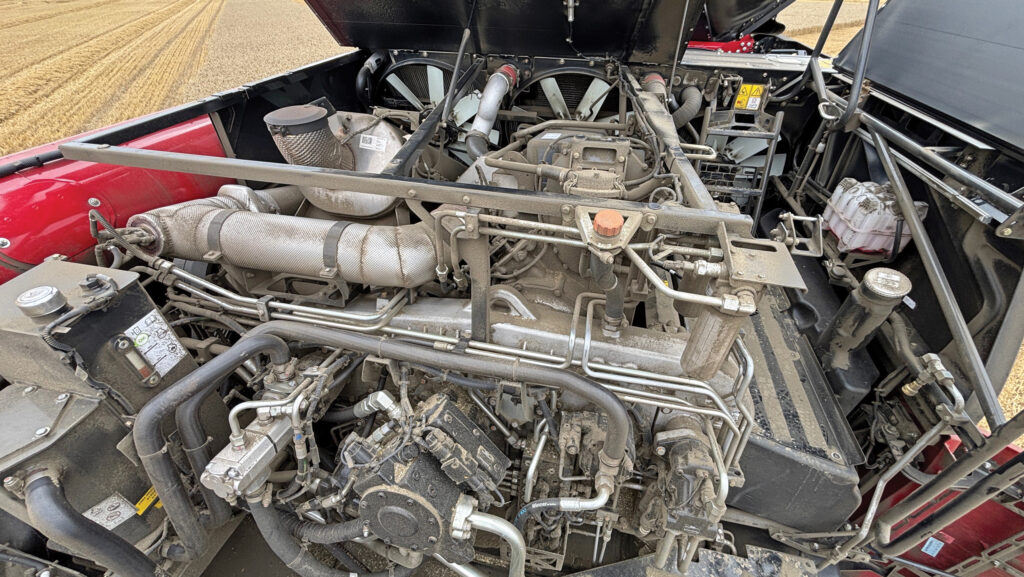
© James Andrews
How much power?
Case hasn’t simply thrown horsepower at the job, instead carefully matching engine output to the internals of the machine.
In the AF10, power is provided by a six-cylinder, 15.9-litre FPT Cursor 16 engine that puts out 775hp, with the AF9 getting a smaller 12.9-litre Cursor 13 rated to 634hp.
It then relies on automated setup and driving systems to make the most of this power.
Once targets have been set for parameters such as losses, sample quality and cracked grains, the combine will try to maintain these while keeping the engine working as close as possible to maximum engine load set by the operator.
Most UK machines will come fitted with MacDon FD2 Flexdraper headers, with the AF10 typically teamed with a 13.7m (45ft) or 15.24m (50ft) version and the AF9 a 12.5m (41ft) or 13.7m.
Each of these is constructed with three independently floating sections that hug ground contours and they’re fitted with an “active float” system that supports 97% of the header’s weight.
The rest is carried on support wheels which help guide the table over lumps and bumps.
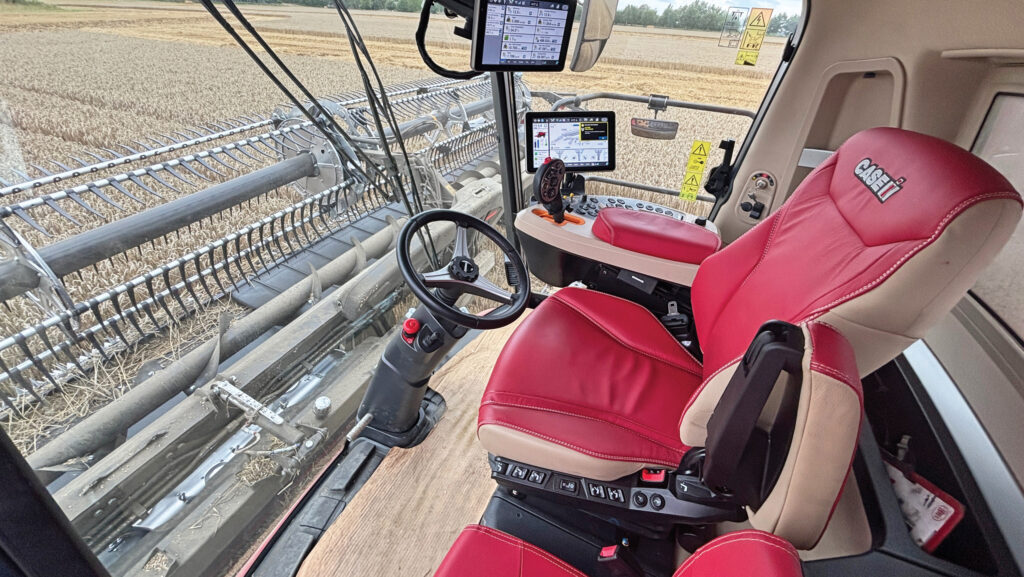
© James Andrews
Any cab updates?
The cab is one of the few areas Case IH hasn’t treated to a major update, partly because it received a recent overhaul with the launch of the 260 series.
Even then, the most notable upgrade was the introduction of Pro 1200 screens, as used on the maker’s latest tractors.
With these came smarter graphics and slicker menus that make it easier to view and change settings.
Operators are also treated to a plush red leather seat complete with cooling, heating and even a massage function.
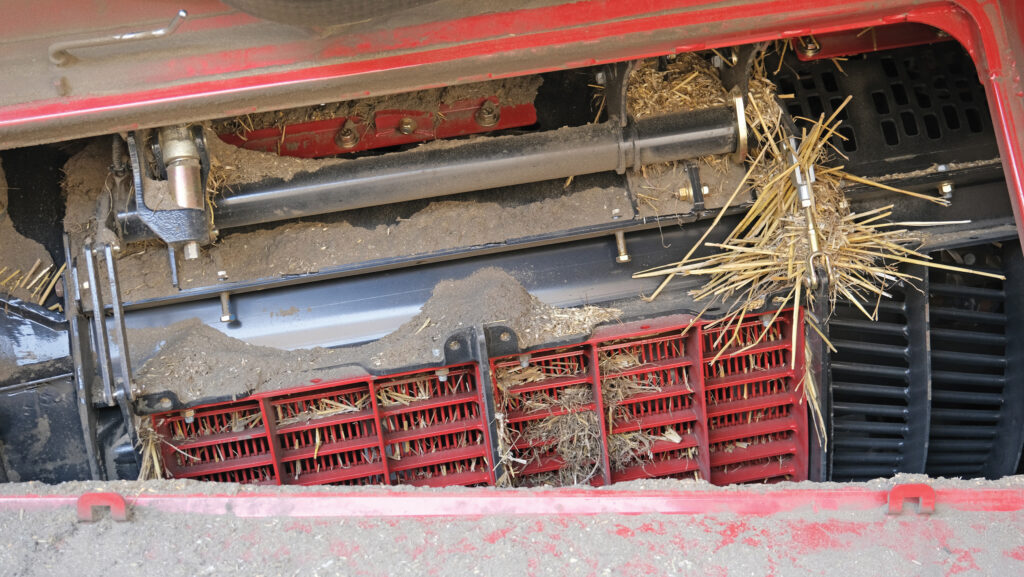
© James Andrews
What about the straw chopper?
Both AF models are fitted with a combined straw chopper and chaff spreader designed to evenly spread material behind headers up to 18m (61ft) wide.
Straw is fed into the unit from the rotor via a beater which does a far more efficient job than gravity alone.
Once the chopper has done its thing, the material drops into a dual disc spinner that distributes it and the chaff over the full cutting width.
Meanwhile, a radar system constantly monitors the spread pattern, adjusting rotor speeds and vane angle to give the best distribution of material.
It will also automatically flip the settings when the combine turns on the headland to account for wind direction.
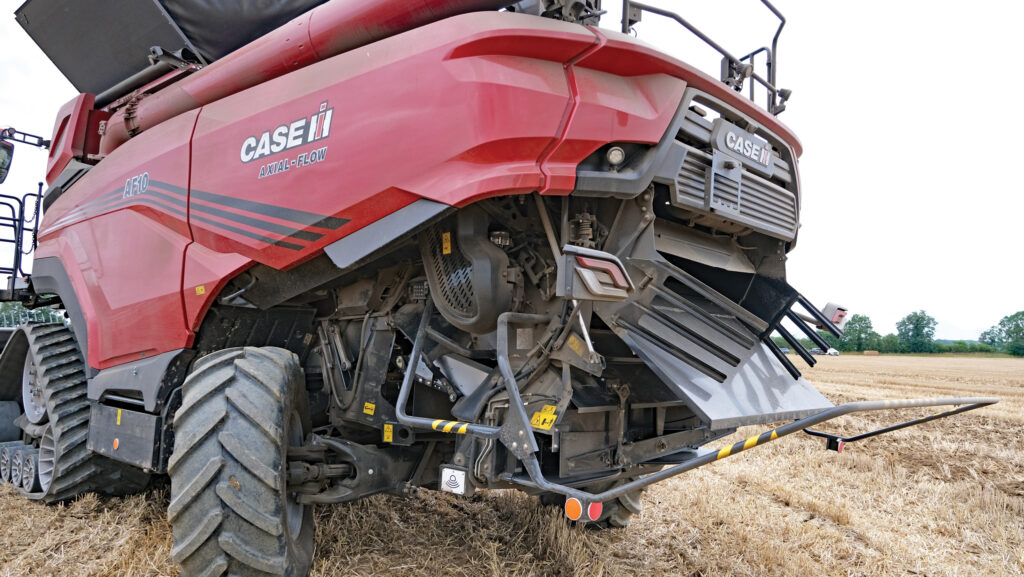
© James Andrews
How much do they cost?
Retail price of an entry-level AF10 without a header is £790,000, so when buyers factor in £145,000 for a 45ft MacDon table, the total bill is £935,000.
However, factor in dealer discount and interested parties should be able to knock about a third off that figure.
Those content with an AF9 will save a little cash, with retail prices starting at about £725,000.
Both models are taking a demo tour of the UK this harvest, with production machines scheduled to arrive on farms for the 2026 cutting season.
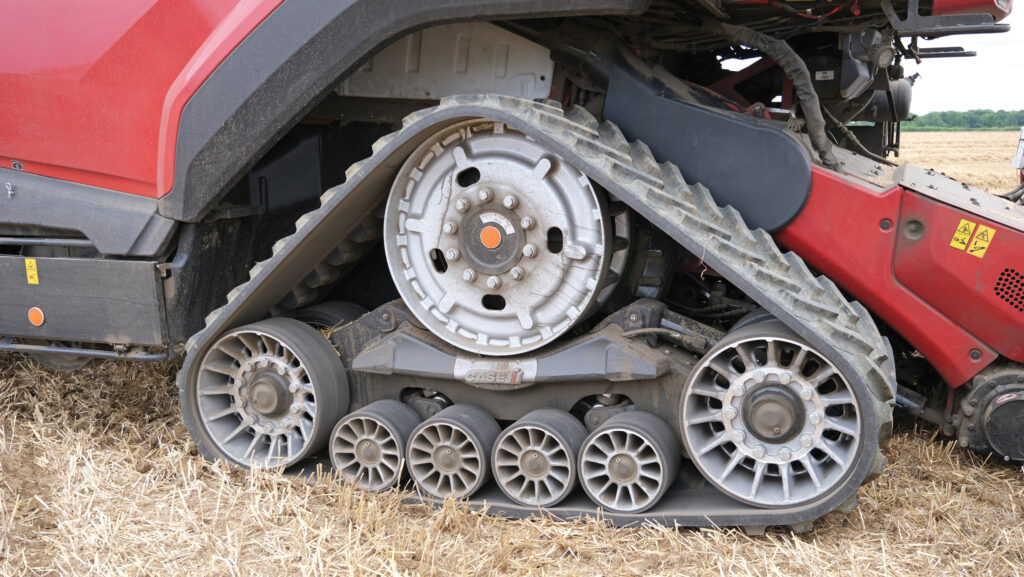
© James Andrews
AF9 and AF10 specs |
||
|
|
AF9 |
AF10 |
|
Engine |
12.9-litre, six-cylinder Cursor 13 |
15.9-litre, six-cylinder Cursor 16 |
|
Max power |
634hp |
775hp |
|
Grain tank capacity |
16,000 litres |
20,000 litres |
|
Unloading speed |
159 litres/sec |
210 litres/sec |
|
Threshing and separating |
Single rotor – 762mm wide and 3.67m long |
|
|
Grain cleaning |
Twin setup with dual upper/lower sieves and clean grain augers |
|
|
List price (excluding header) |
£ 725,000 |
£790,000 |

